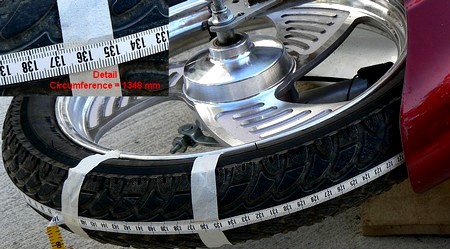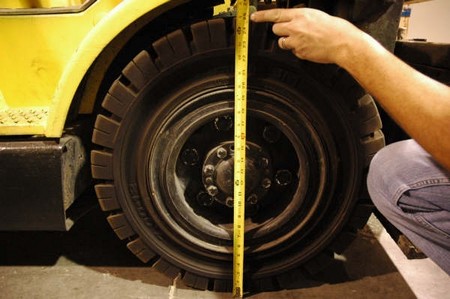Tires are part of a vehicle that allows it to smoothly move form one place to another. The importance of tires should not be underestimated as they are built to last and withstand almost any surface. As vehicles come in many sizes, so does tire sizes. Changing tire sizes may affect the overall engine and transmission operation. If necessary, the speedometer may require recalibration as well. Choosing the correct tire size is essential because odd sizes will render the tire useless. Internationally, measurements are done in millimeters. Therefore ensure that you have the correct tool to measure the size accordingly.

How to measure tire sizes? Upon closer inspection on the sidewall, you will notice the branding of tire size. This revelation provides significant information regarding the tire’s intended purpose, load capacity, dimensions, high temperature and high speed durability. For those who are not aware, most tire sizes begin with a letter. This letter helps to identify the type of vehicle and type of service for which they were manufactured and designed. For example, those beginning with P are meant for “passenger vehicles”, T for “temporary spare”, and LT for “light-truck metric vehicles”. The important points to note when measuring are overall width, section width, section height, tread width, overall diameter and aspect ratio. These points are indicated in the numbers stated subsequently. To measure the overall width of the tire accurately, it is crucial to properly inflate the tire. It literally measures the distance of “one sidewall to another sidewall”. If you’re not a car expert, get help from Hamm’s Tires. They’re tire experts that can assist you.
The section width is also the measuring of sidewall to sidewall, but unlike the previous measurement, it does not take into account protective ribs or manufacturer’s markings. Similarly, the tire should be inflated sufficiently and mounted unto wheel. Section height represents the measurement of vertical distance where the tire meets the wheel to the outer tread surface. To prevent inaccurate measurement, you should bear in mind that the tire should be free from load. As for tread width, this is a measurement of the inner edge to the outer edge of tread. Overall diameter represents the overall distance between tire’s upper and lower tread surface. Similarly, tire should be load-free to ensure accurate measurement.
Tire and wheel diameters should always match. This helps the vehicle to function optimally as well as preserve its originality. These are just some general ideas on how to measure tire sizes. For better understanding, do read up more on this.









